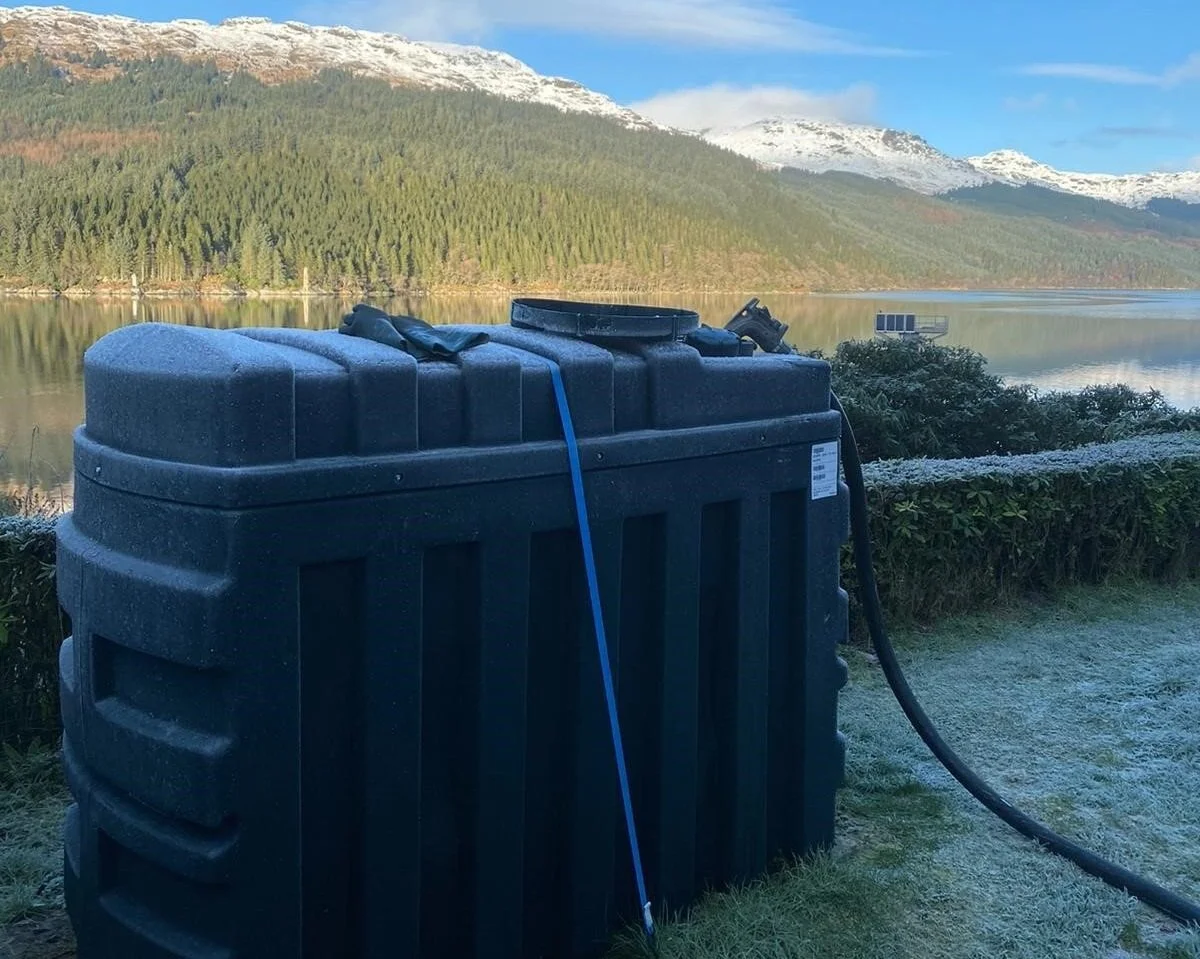It’s essential to ensure your tank is fit for purpose during winter months. Not only could a damaged tank mean you are left without heating or hot water in your home, but it can also cause environmental pollution.
We encourage all of our customers to plan ahead of the winter months. This includes properly maintaining your fuel tank ensuring that it is sufficient enough to withstand harsh weather conditions.
ENSURE YOUR TANK IS SECURE
Prior to any bad weather, we advise positioning your tank securely and checking your base is adequate. The above photo is an example of an unsecured base that has caused the tank to “bow” in the middle from the unsupported weight of the oil.
As your oil levels decrease, your tank can be more susceptible to moving from its base during adverse weather conditions. Your heating oil tank should be situated at the centre of its base ensuring it complies with the OFTEC regulations.
PREVENT WATER CONTAMINATION
It’s recommended to visually inspect your tank for any signs of damage or cracks where water could enter your tank, also ensuring lids are closed tightly. It is also good practice to check your tank before any forecast of heavy rainfall or snow.
If water does manage to enter your tank it can cause bacteria growth and aid the formation of sludge. This can cause problems with blocked fuel lines and filters where you would require an engineer to clear it.
CHECK FOR CONDENSATION
Condensation can occur in your tank from hot weather during summer. This can then drip into your fuel causing water contamination. Unfortunately, you cannot check for water contamination during a visual inspection. This would require someone to come out and dip your tank to check for water and then remove it from the fuel.
CLEAR SNOW FROM TOP OF TANK
Your heating oil tank should be inspected each time there is heavy snowfall. The weight of large amounts of snow sitting on top of your tank can cause damage. The excess snow should be brushed off and we recommend lagging any exposed pipes to prevent damage from low temperatures or condensation.
REGULAR TANK INSPECTIONS
it’s a good idea to check your tank on a monthly basis. Just like servicing a car your tank can become unsafe between services. Our drivers will always carry out a visual inspection before a delivery which you can do too. Some things to check for:
Cracks- Check for any small or large cracks in the Body of your tank.
Discolouration - if the tank is turning white or fading due to sun exposure it may be time to replace your tank
Bulges- check for any bowing where the tank is bulging.
Smell - If you are able to smell kerosene strongly you may have a tank leak.
Stains - If there are any stains or wet patches around your tank this would suggest a leak.
Corrosion- Check all pipework for any rust or damage.
If you need any help or information on the above topic, you can give our office a phone on 01563 525215 and one of our friendly staff can advise you.











